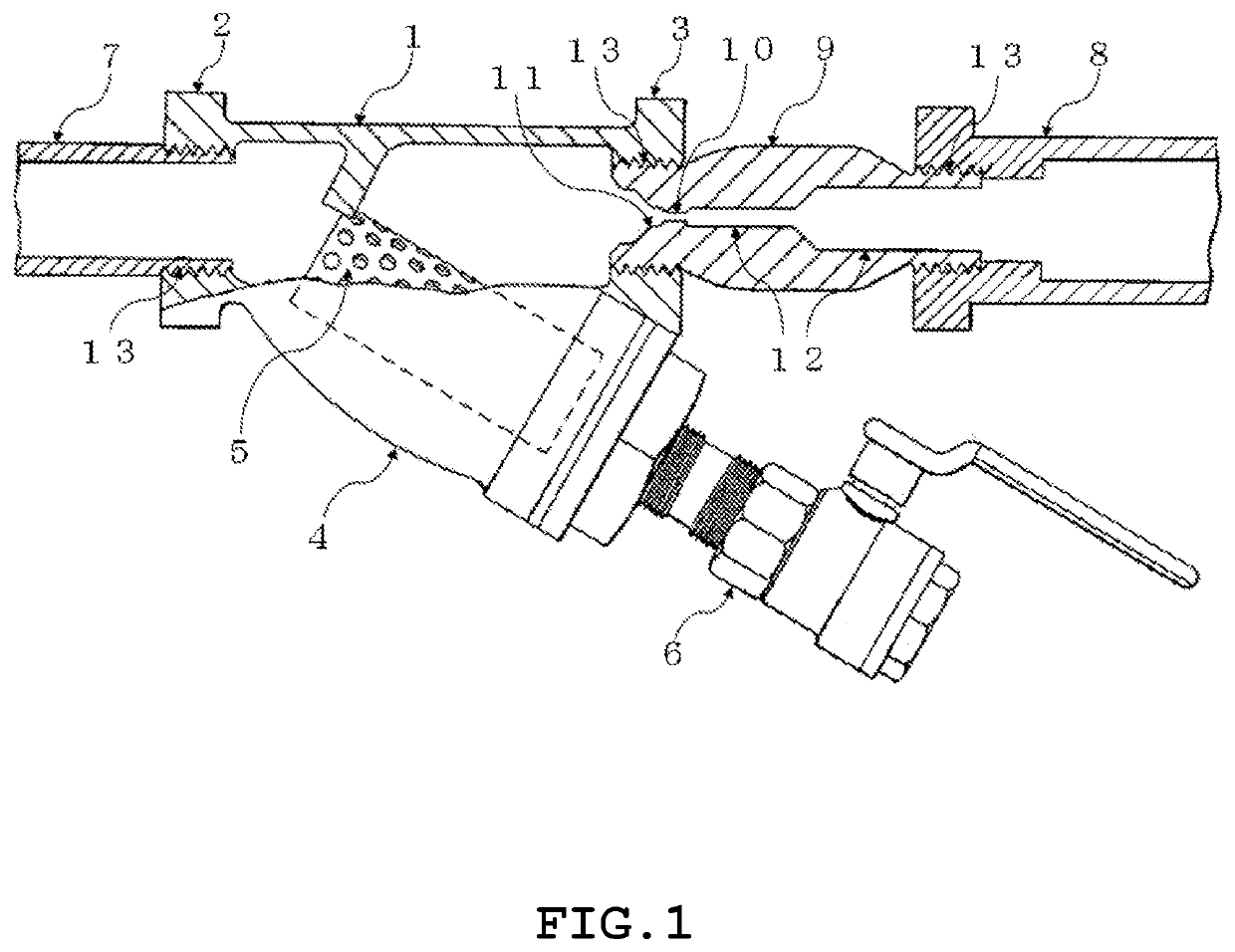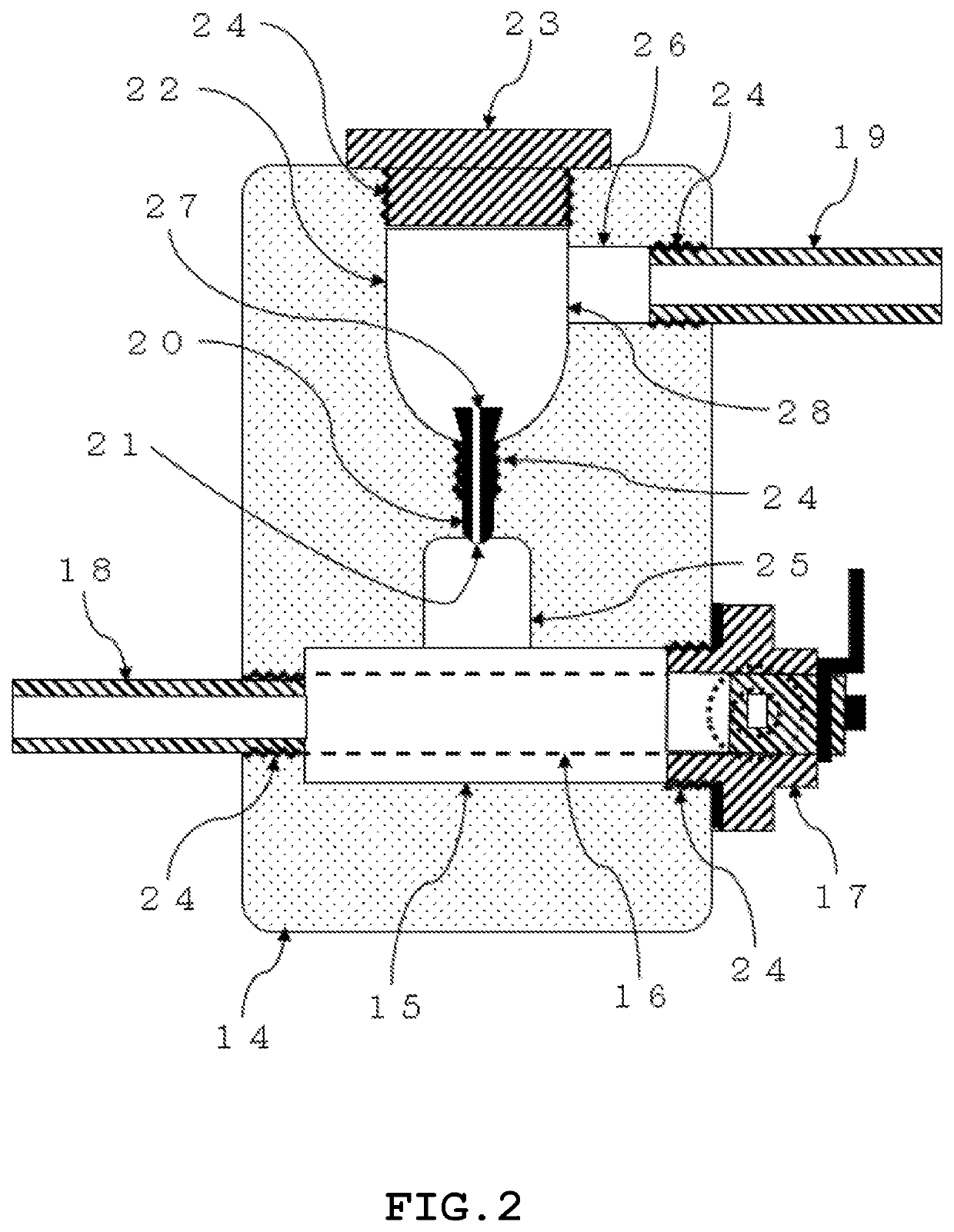Nozzle-type steam trap
a steam trap and nozzle technology, applied in the direction of steam traps, mechanical equipment, etc., can solve the problems of affecting the stable operation of factories, affecting the efficiency of facilities, and reducing the quality of products, so as to reduce the amount of co2, increase efficiency, and save energy
- Summary
- Abstract
- Description
- Claims
- Application Information
AI Technical Summary
Benefits of technology
Problems solved by technology
Method used
Image
Examples
Embodiment Construction
[0033]Hereinafter, regarding embodiments of the present invention, a venturi nozzle-type steam trap will be described, as a typical example, with reference to the drawings; however, the present invention is also applicable to general nozzle-type steam traps of the orifice nozzle type and the tunnel structure resistance nozzle type capable of performing continuous drainage. Note that the present invention is not limited to these embodiments, can be carried out by being variously modified within a scope not deviating from the spirit of the present invention, and is limited by only the technical concept disclosed in the claims.
[0034]FIG. 2 is a schematic view illustrating a section of a horizontal strainer-included venturi nozzle-type steam trap according to an embodiment of the present invention, in which a means for sealing a venturi tube by using a drain water is provided, and a steam transport pipe and a drain-water drainage pipe are not on an identical axis.
[0035]A steam trap body...
PUM
 Login to View More
Login to View More Abstract
Description
Claims
Application Information
 Login to View More
Login to View More - R&D
- Intellectual Property
- Life Sciences
- Materials
- Tech Scout
- Unparalleled Data Quality
- Higher Quality Content
- 60% Fewer Hallucinations
Browse by: Latest US Patents, China's latest patents, Technical Efficacy Thesaurus, Application Domain, Technology Topic, Popular Technical Reports.
© 2025 PatSnap. All rights reserved.Legal|Privacy policy|Modern Slavery Act Transparency Statement|Sitemap|About US| Contact US: help@patsnap.com



